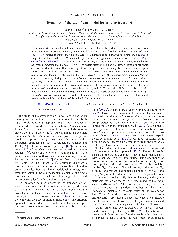摘要
The transport of organelles and other cargoes in living cells has been described by a kinetic tug-of-war model advanced by Muller, Klumpp, and Lipowsky, in which, as a function of time, t, a team of n(+)(t) = 0,1, ..., N(+) molecular motors may attach a cargo to a filamentous track and pull it towards the plus end in competition with n-(t) = 0,1, ..., N- motors that pull towards the opposite end. In recent work [Y. Zhang, Phys. Rev. E 79, 061918(2009)] this model was analyzed for N+, N- 1, establishing the existence, depending on the motor parameters and the ratio v=N(+)/N(-), of system states with either one, two, or three distinct stable stationary modes of motion. Here, adopting a theoretical perspective, we study the parametric and v dependence of the transitions between these mono-, bi-, or tristable system states and examine their associated trajectories and domains of attraction in the flow space, (n(+),n(-)), of the attached motor numbers. Various sequences of winning, losing, and "stalemate" or close-to-motionless modes are uncovered. When, as realistic, N(+) and N(-) are of order 2 to 10, fluctuations will move the system from one of two or three modes of motion to another mode. An analysis of the associated probability fluxes demonstrates that the mean time between mode-to-mode transitions increases exponentially with N(+) and N-. The overall stall force, i.e., the externally imposed load under which the mean cargo velocity vanishes, is similarly elucidated and shown to vary strongly but sublinearly with N+ and N-, as well as depending in a less than transparent manner on other model parameters beyond the stall forces of the individual + and - motors.
- 出版日期2010-7-23
- 单位复旦大学
